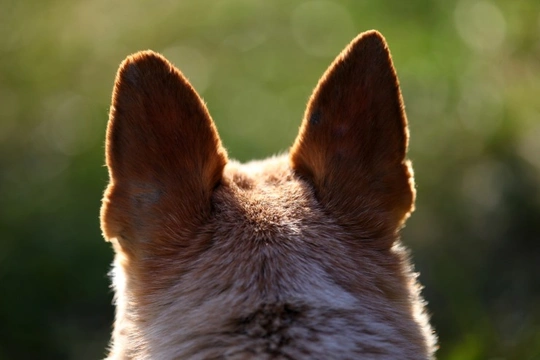
What the shape and size of your dog’s ears can tell you about their origins
If you own a dog of a recognised pedigree breed, you will be able to find out a great deal about their origins and the history of the breed’s development by doing a little research. Pedigree dog breeds all have set breed standards that dictate the appearance (and other traits) of the dogs in question, and these are often long and detailed, covering everything from set colour and coat pattern combinations to the exact shape and conformation of individual areas of the body, like the ears.
Dog breeds have evolved and changed a lot over time, and new breeds come into being and gain formal recognition by the relevant governing bodies like the Kennel Club occasionally too. However, most of the well-established dog breeds that we know and love (and particularly those that retain a modern appearance much like their historical ancestors) have developed certain conformation traits that actually reflect their earliest origins – including where in the world they come from.
This is often particularly true of the ears, and dog ears can of course come in all manner of shapes and sizes from small and pointed to large, wide and drooping. The type of climate that different breeds hail from often correlates with the type of ear shapes they display, and this doesn’t happen accidentally – it is a direct result of evolution.
If you are wondering what your dog’s ears can tell you about their origins – or if you don’t actually know your dog’s origins and are interested in finding out more – this article will outline in more detail what the shape and size of their ears can tell you. Read on to find out more.
Dogs that originated in cold, harsh climates
Dog breeds and types that originated in parts of the world where the weather is usually cold and inhospitable, perhaps with plenty of snow, biting winds and lots of sleet and ice tend to evolve with neat and compact ears that generally point upwards, but that have a reasonable degree of mobility too, which allows them to be flattened against the head.
You might see this in breeds like the Alaskan malamute. This breed’s ears are upright but compact, enabling them to pick up sounds across large open distances without getting an earful of snow in the process! The feathering and hair in and around the ears also tends to be dense to keep debris out, and they are very mobile and allow the dog to flatten their ears against their heads; this provides further protection from the elements, and makes the dog’s profile more streamlined when they run too.
Dogs that originated in cold, dry climates
Many parts of the world regularly experience very low cold temperatures, but with a lot less rain, moisture and humidity around, which means that dogs who evolved in such places evolve with slightly different ears than those from cold, wet regions.
Dogs from cold but dry climates tend to have upright but small and compact ears, which don’t have as much mobility as dogs from cold, wet areas but that are also well insulated by both inner and outer hair, and that also often appear even smaller than they really are, nestled as they tend to be in the thick, plush hair around the head and skull.
Ears of this type can be seen in breeds like the chow chow, which hails from the cold, dry regions of China.
Dogs that originated from hot and humid climates
Dogs that come from very hot countries that also tend to get a lot of rain and humidity (and that may also have monsoon seasons too) tend to have fairly distinctive ear shapes.
The ears of dogs from hot, humid climates are usually erect and large, tapering from the base to the tips, with a reasonable degree of mobility to hold the ears either upright or flatter. Ears of this type also tend to be quite delicate and finely constructed with fine, single-layered fur on the outside and little fur around the inside of the ears.
This is because the large surface area of ears of this type helps the dog to stay cool by releasing body heat, and the thin, fine fur over the ears provides protection from sunburn without making the dog even hotter.
The Ibizan hound is a good example of a dog with ears of this type, which evolved from a hot and relatively humid climate.
Dogs that originated from hot, dry climates
Finally, dogs that originated from hot and dry climates tend to have large, flat ears, which are often (but not always) drooping or floppy rather than upright.
This can be seen in breeds like the Afghan hound. Dogs of this type have long, broad ears that have a large surface area to allow for the efficient exchange of heat, and the fur and feathering over the ears helps to keep the dust, sand and grit that is often in the air in hot, dry regions from entering the ear and causing problems. This feathering also helps the dog to maintain their temperature during the day when it is very hot by protecting against sunburn and insulating the ears from external heat to an extent, as well as keeping them a little warmer at night when the temperature often drops sharply after the sun goes down.



